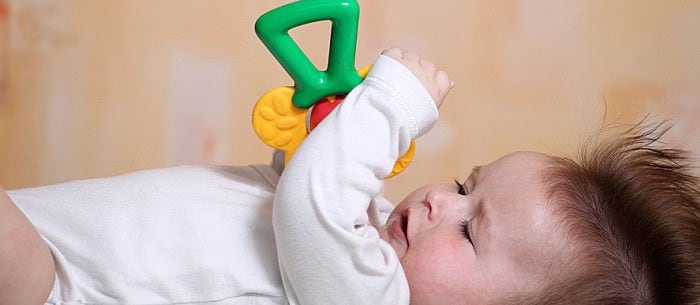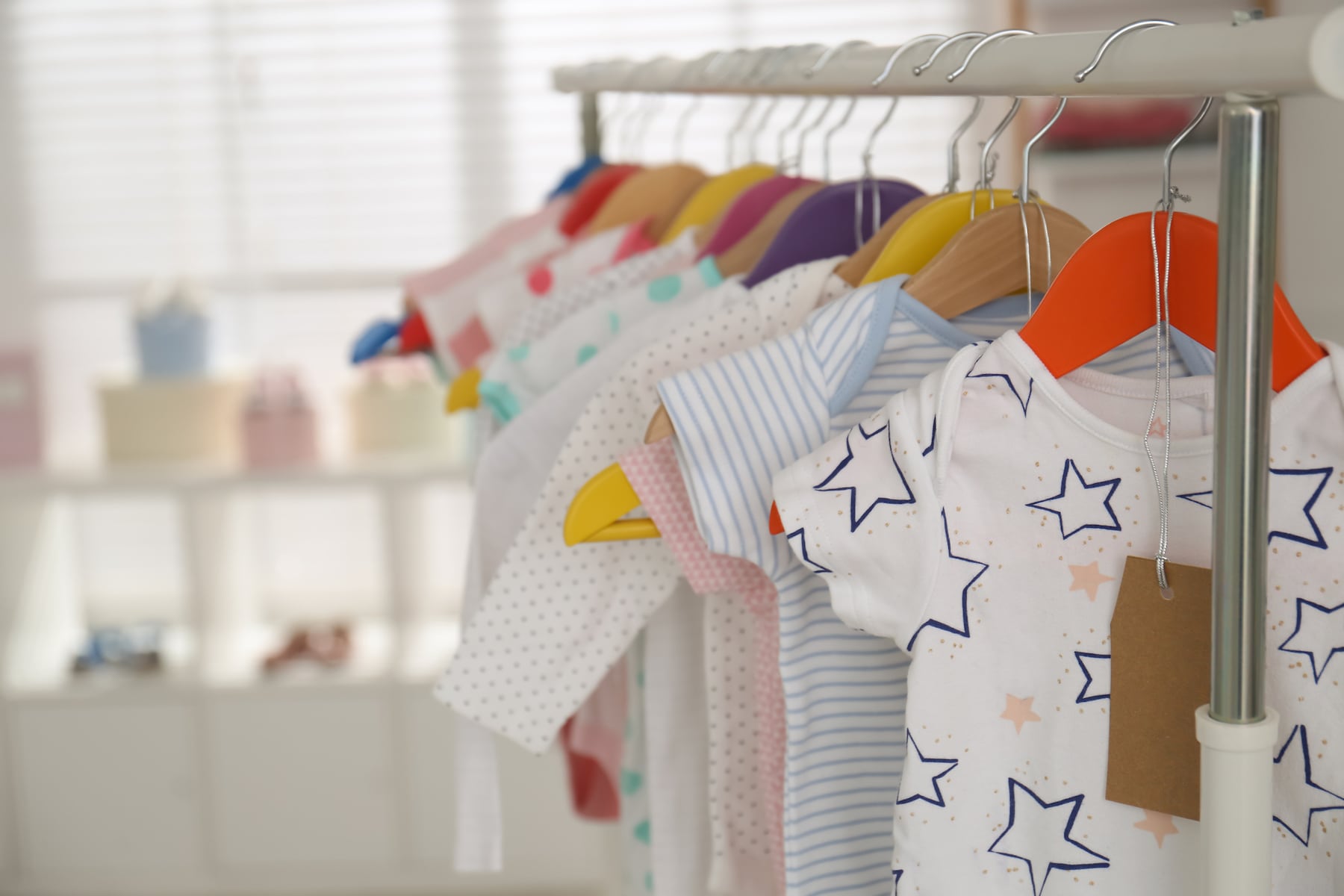Sometimes handing your baby a teething ring isn’t optional — it’s a necessity. Your little one is wailing away as those first chompers break through, but all the teething ring options make you dizzy. Before you start crying too, learn more about this small saving grace.
According to the American Academy of Pediatrics, chewing on firm objects helps to ease a baby’s mouth pain. So, how can you find the right ring to keep your baby cool and calm during teething times?
Think Safety First
Before breaking out the latest, greatest teether, stop and take a look at just how safe it is. Some rings have a chillable gel inside. Always make sure that the outer layer of the teether is completely intact, free from punctures and is not at risk of leaking. The Consumer Product Safety Commission maintains recall alerts for filled rings that may pose a risk to your baby’s health. When it comes to filled teethers, a puncture doesn’t only cause a leak. It may also lead to bacteria or mold growth inside the ring itself. What’s the result? The potential for serious stomach distress, or worse.
Even though the cool feel of a chilly ring naturally numbs the pain, freezing the toy is a no-no. Jamie Heil, a pediatric intensive care nurse, mom and blogger behind Toys in the Dryer, says, “Do not freeze liquid or gel-filled teething rings — they can crack. They will also become too hard and may injure your child’s gums. They are meant to be put in the fridge only.” You should also avoid rings that are made up of small beads. These could detach, posing a choking hazard to your baby.
What types of teethers should you look for? Next time you’re staring at a wall of teething rings, try one with some of these features:
- Massage Away
Cold isn’t the only way to cut your baby’s pain down to size. Massaging teethers, such as Zoli’s Gummy Sticks, have a softly textured end that mimics a toothbrush’s bristles. The First Years’ Star Power Teether goes a step further. Not only does it have a textured surface, but it makes the massage mega-sized with a soothing vibration.
- Try Silicone Soothers
Silicone is tough, elastic and easily chills in the fridge. Look for a BPA-free silicone teether, such as the Honest Company’s medical-grade silicone butterfly. Why go BPA-free? Bisphenol A (or BPA) is a chemical used in some plastic products. While there’s still some controversy over the dangers of short-term exposure, the U.S. Centers for Disease Control and Prevention notes that adverse health effects (such as reproductive system problems) may result from exposure to BPA.
- Add a Toy
Sometimes having something to snuggle is just what your baby needs to soothe teething pain. Your baby can get creature comfort with the Sophie the Giraffe teething ring or Olive and Pickle’s Elephant Louise, whose ears make a crinkle noise to entertain your little one.
- Consider the Shape
Though rings are a popular shape for teethers, they’re far from the only option. Dr. Brown’s fruit-inspired Coolees are brightly colored teething treats that were developed by a pediatric dentist, and their triangular shape can reach every part of your baby’s gums.
- Think Outside the Box
For Nicole Still, a prenatal and birth doula, mom of two teething babies and blogger behind Still Mommy, traditional teething rings weren’t on the menu. When neither of her babies found the regular rings appealing, Still used her imagination to try something different. “They prefer to chew on … a wet wash cloth,” she says. Heil echoes this, saying, “A wet, frozen wash cloth is one of the best ‘teething rings.’ I used them with my girls and we use them at the hospital at which I work.” Of course, you should keep an eye on your baby no matter what kind of teething ring you give him.
When it comes down to it, teething ring choice is just as personal as what bottles, diapers or shampoo you pick. As long as you keep safety key, there’s no magical formula for finding the top teether. The ring you choose depends on your baby’s preferences, his age, the stage of teething he’s in and your own beliefs about what he should (or shouldn’t) chew on.
Is your baby still crying, despite the rad ring you picked out? Check out these 4 Tips on How to Calm a Crying Baby.
Erica Loop is a mom, parenting writer and educator with an MS in child development. When she’s not busy teaching, she’s creating kids’ activities for her blog Mini Monets and Mommies.





